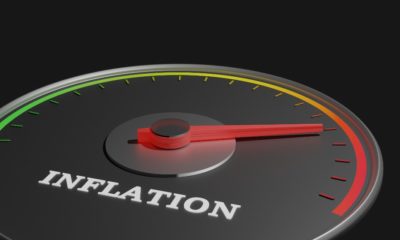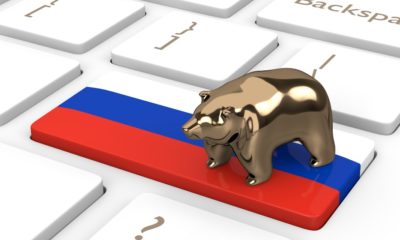Economy
The Fed is Propping Up Bond Prices, Are Stocks Next?

Last Monday the Federal Reserve announced that it would spend nearly $700 billion to buy up Treasurys and mortgage-backed securities as part of its “aggressive action” to soften the impact the coronavirus is having on our economy.
As part of the stimulus package, the Fed also said it would start buying exchange-traded funds (ETFs) that track the corporate bond market. For now, it appears the purchases will be limited to investment grade or highly-rated corporate bonds and won’t include more risky high-yield (or junk) bonds.
It’s the first time that the Fed has directly bought securities in an attempt to add liquidity and jump start a frozen market.
“This will provide much-needed liquidity to the bond market and to ETFs,” said Todd Rosenbluth, head of ETF and mutual fund research at CFRA.
Steve Blitz, chief U.S. economist for TS Lombard, says the Fed’s move is helping investors enter and exit a position if needed. “All of this is to make sure that people who want to sell have a buyer. The Fed is taking both sides of the market so people who need to raise cash can do so.”
It’s clear why the Fed prefers to buy corporate bonds through an ETF as opposed to buying bonds in individual companies. With one purchase order, it can impact the bond prices of hundreds of companies at once, as opposed to the time consuming task of identifying, pricing and then buying bonds of individual companies.
By moving into the ETF space and buying up bonds, the Fed may also be trying to calm a part of the market that has seen record outflows over the last few weeks. Just two weeks ago, the iShares iBoxx $ High Yield Corporate Bond ETF saw a $1.2 billion outflow, or roughly 8% of it’s total value.
The question becomes, if the market continues to slide as the coronavirus outbreak batters the economy, would the Fed extend its reach and start buying stocks via index ETFs?
It’s an unprecedented move, but then again so was buying bond ETF a little over a week ago.
It would allow the Fed simultaneously impact the stock price of hundreds of companies at once. With the SPDR S&P 500 ETF, the Fed could move the stock price of all S&P 500 companies with a single purchase.
The same would apply for all broad index ETFs like the Dow Jones Industrial Average (DIA) and Nasdaq (QQQ).
Vincent Reinhart, chief economist and macro strategist at BNY Mellon Asset Management, says it could be in the Fed’s playbook.
“Other central banks have done it. It’s the ETF route that the Bank of Japan has taken. I would not rule out them doing equities.”
Lindsey Bell, chief investment strategist at Ally Invest added “We’ve seen the Fed show that they’re willing and able to do whatever it takes to make sure the markets are opening in an efficient manner. They’re taking whatever steps they can. That would be new territory for the Fed, not that they’re scared of new territory.”















